The Continuing Priority of Stewarding Donors - Why Likelihood Eclipses Capacity
The Chronicle of Philanthropy recently highlighted the essential role of donor relationships in sustaining nonprofit fundraising. Their insights reinforce a growing reality in philanthropy: nonprofits that fail to invest in stewardship will eventually pay the price.
In the nonprofit sector, the number of households making charitable gifts has been steadily declining, a troubling trend that Nathan Chappell (my dear friend) and other philanthropy experts have highlighted. Over the past two decades, fewer Americans are giving to charity each year, despite an overall increase in total philanthropic dollars. This shift means that nonprofits are becoming more reliant on a shrinking pool of committed donors—making stewardship more critical than ever.
Yet, too many organizations still prioritize donor capacity over likelihood. They chase high-net-worth individuals based on wealth screenings and financial metrics, assuming that capacity alone determines giving behavior. But data tells a different story: wealth does not guarantee generosity, and those with the greatest capacity often give the least relative to their means. Instead, likelihood—the probability that a donor will engage consistently over time—should be the primary focus for organizations aiming to build sustainable, long-term relationships.
The most successful nonprofits understand that donor retention and lifetime value matter more than one-time, high-dollar gifts. Cumulative giving—the total amount a donor contributes over their lifetime—is far more valuable than a single large gift. Likelihood is the key predictor of cumulative giving because it identifies those individuals who are most engaged, mission-aligned, and willing to support year after year.
Stewarding donors based on likelihood means focusing on those who:
Give consistently, even if their gifts are modest.
Engage beyond giving—attending events, volunteering, or advocating for the cause.
Demonstrate an emotional connection to the mission.
By nurturing these relationships, organizations can maximize the long-term philanthropic potential of each donor, rather than treating philanthropy as a transactional exercise.
Despite mounting evidence that donor stewardship is essential for sustainability, many organizations underinvest in it. They pour resources into acquisition campaigns, major gift prospecting, and large-scale appeals but fail to meaningfully engage the donors they already have. This short-term thinking carries long-term consequences.
Nonprofits that do not prioritize stewardship will inevitably pay the price:
Declining Retention Rates: First-time donor retention rates hover around 20%, meaning that 8 out of 10 new donors never give again. Without a strong stewardship strategy, nonprofits face an uphill battle to keep supporters engaged.
Erosion of Donor Trust: Donors expect transparency, appreciation, and impact reporting. When nonprofits fail to invest in personalized stewardship, they risk alienating their most passionate supporters.
Increased Fundraising Costs: Acquiring a new donor is far more expensive than retaining an existing one. Without strong stewardship, organizations will find themselves constantly chasing new sources of revenue instead of maximizing the value of their existing base.
The Chronicle of Philanthropy’s article emphasizes how organizations that invest in gratitude, communication, and personal connection can maintain donor loyalty. Stewardship isn’t just a "nice to have"—it is a financial necessity.
Nonprofits must shift from a transactional mindset to a relationship-driven approach. Organizations that prioritize likelihood over capacity, nurture donor relationships, and commit to long-term engagement will be the ones that thrive in the evolving philanthropic landscape.
The question isn’t whether stewardship is worth the investment—it’s whether nonprofits can afford not to.


